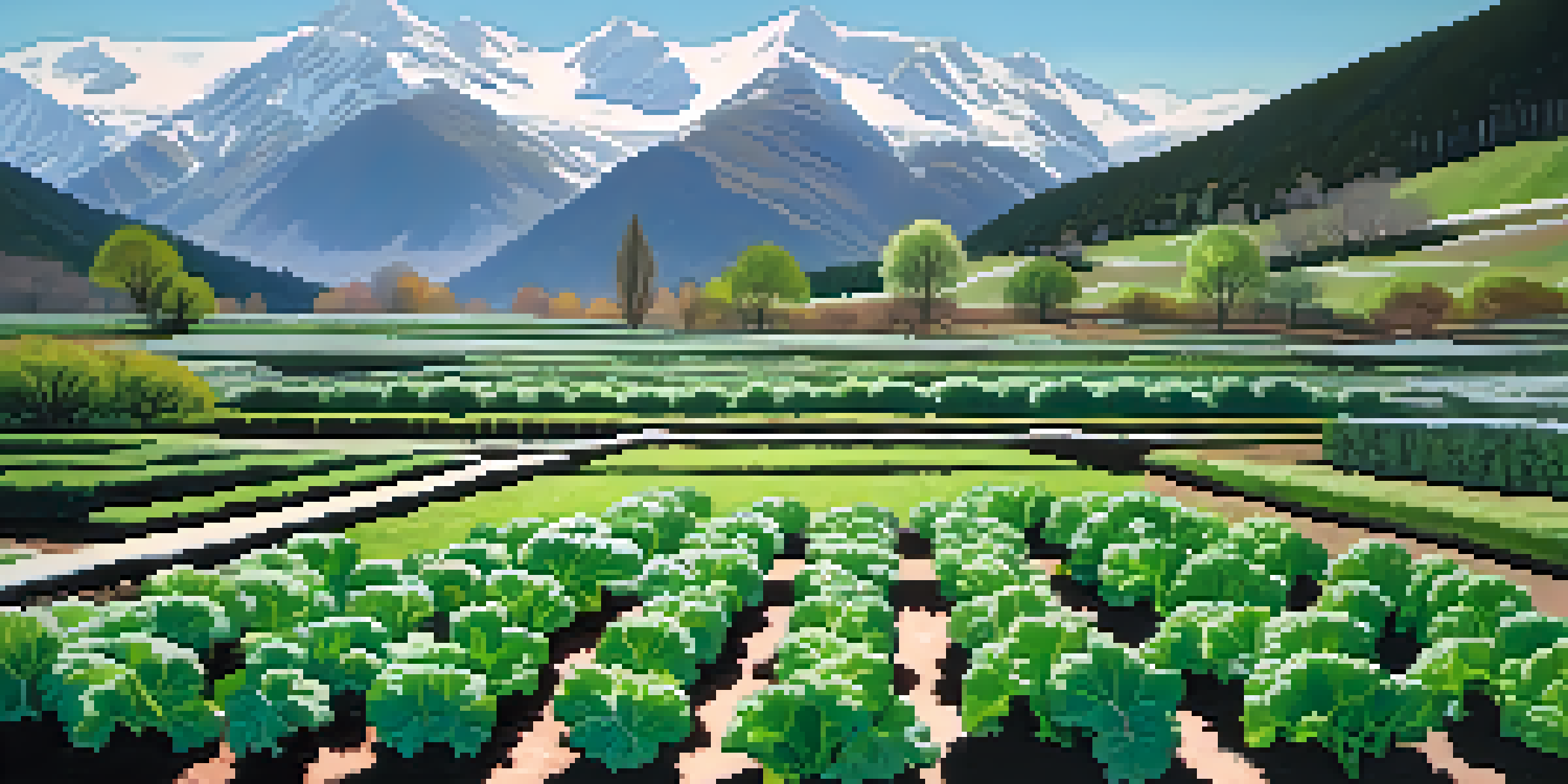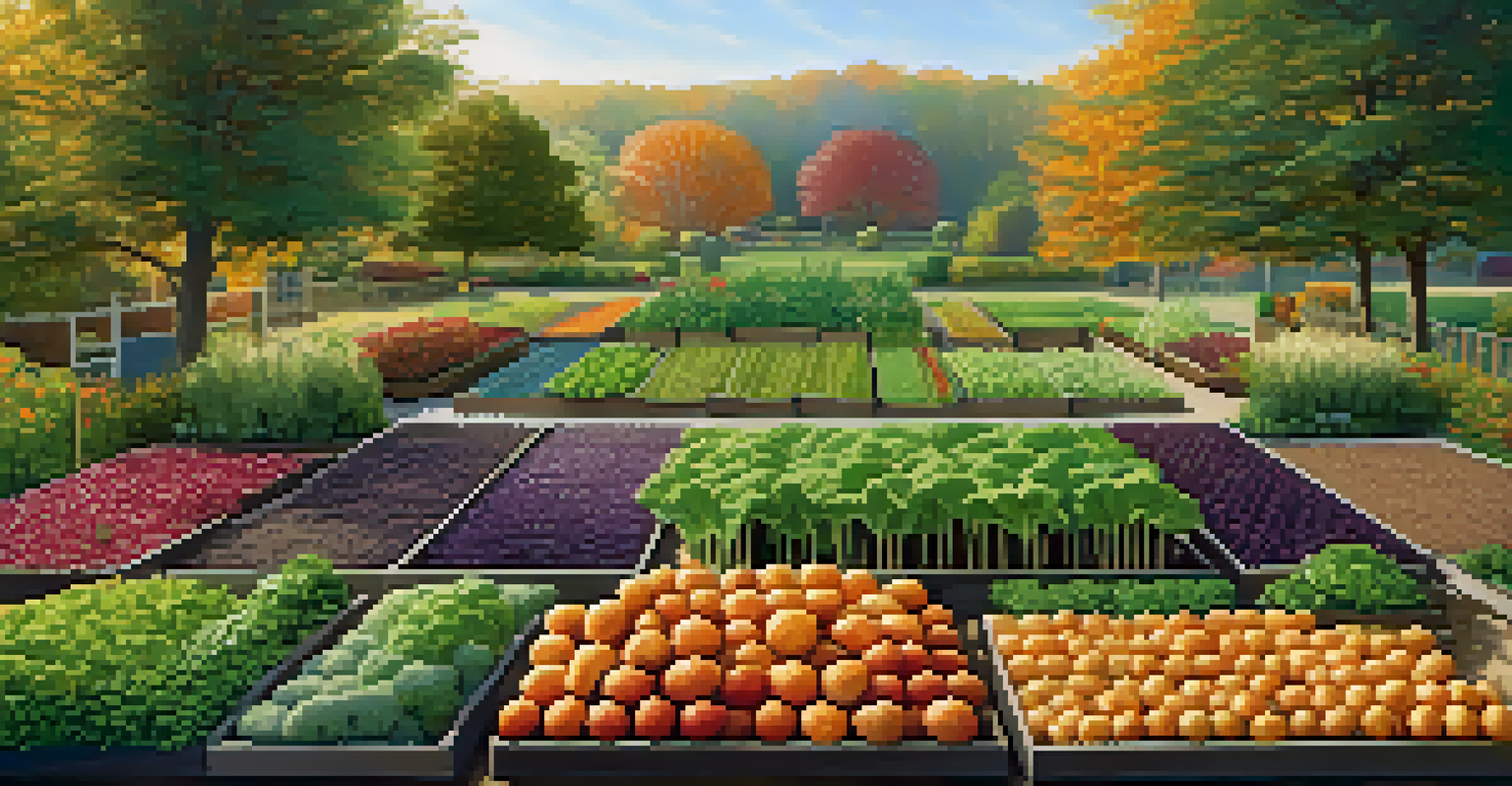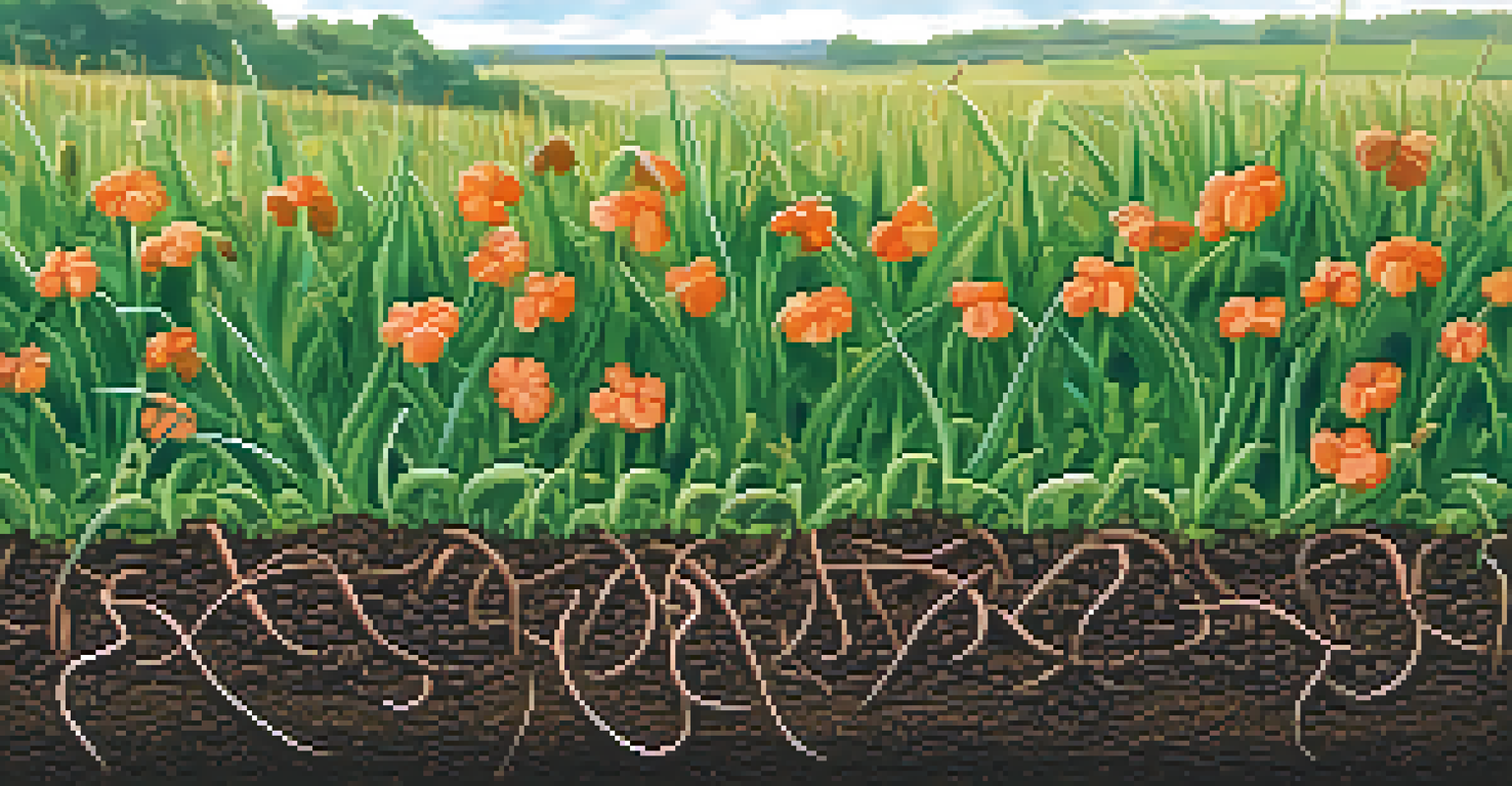Cold Climate Gardening: Seasonal Crop Rotation Strategies

Understanding Cold Climate Gardening Essentials
Cold climate gardening can be a rewarding endeavor, but it requires specific strategies to thrive. The challenges of frost, shorter growing seasons, and unpredictable weather mean that gardeners need to be particularly mindful of their crop choices. Knowledge of your local climate and soil conditions is crucial, as this will help you determine which plants are best suited for your garden.
Gardening requires lots of water - most of it in the form of perspiration.
In cold climates, the growing season is often limited to just a few months, so planning is essential. This involves selecting varieties that can mature quickly and withstand cooler temperatures. Additionally, incorporating season extenders, like row covers or cold frames, can help protect plants and give them a head start in early spring or a boost in late fall.
Understanding the unique aspects of cold climate gardening sets the foundation for successful crop rotation. When you know your limitations and advantages, you can create a robust gardening plan that maximizes your yield and minimizes risks associated with the cold.
The Importance of Crop Rotation in Cold Climates
Crop rotation is not just a trendy gardening practice; it’s a foundational strategy for maintaining soil health and preventing pests and diseases. By rotating crops, you can break pest cycles and reduce the risk of soil depletion. This is especially important in cold climates where growing conditions can already be tough on plants.

For instance, if you plant tomatoes in one bed, it's wise to follow them with a legume like beans in the next season. Legumes fix nitrogen in the soil, enriching it for the heavy feeders like tomatoes that will follow next. Such practices not only enhance soil fertility but also promote biodiversity in your garden ecosystem.
Plan for Cold Climate Gardening
Understanding your local climate and using season extenders can significantly enhance your gardening success in cold areas.
Implementing a thoughtful crop rotation plan helps create a sustainable gardening environment. It encourages healthy soil, reduces the likelihood of disease, and ultimately leads to a more productive garden, even in the face of cold weather.
Planning Your Seasonal Crop Rotation Calendar
Creating a seasonal crop rotation calendar is an excellent way to ensure you’re following best practices in your garden. This calendar should outline what crops will be planted in each bed throughout the year, taking into account the unique requirements of cold climate gardening. A simple spreadsheet can help you visualize your planting schedule and track crop success.
The greatest fine art of the future will be the making of a comfortable living from a small piece of land.
Start by dividing your garden space into different sections based on the types of crops you plan to grow. For example, you might designate one area for root vegetables, another for leafy greens, and a third for legumes. This organization helps facilitate proper rotation and ensures that each area gets a diverse range of crops over time.
By being proactive and planning out your rotation schedule, you can maximize your harvest and keep your soil healthy. This strategic approach can make all the difference in a cold climate where every growing day counts.
Choosing the Right Crops for Cold Climates
Selecting the right crops is essential for successful cold climate gardening, especially when considering crop rotation. Look for varieties that are known to thrive in cooler temperatures, such as kale, spinach, and radishes, which can often be planted early in the season. Additionally, consider your local frost dates to time your planting effectively.
It's also important to choose crops that complement each other in terms of nutrient needs and growth patterns. For example, planting fast-growing crops like lettuce with slower-growing crops like carrots can help maximize your garden space. This companion planting strategy can also provide shade for tender plants while the hardier ones establish themselves.
Rotate Crops for Better Soil Health
Implementing crop rotation not only prevents soil depletion but also boosts garden productivity by enhancing biodiversity.
Ultimately, the right crop selection will lead to a more diverse and resilient garden. By understanding which plants flourish in your cold climate, you’ll set the stage for a bountiful harvest.
Utilizing Season Extenders for Cold Climate Gardening
Season extenders are your best friends when it comes to gardening in cold climates. Tools such as row covers, cold frames, and hoop houses can significantly lengthen your growing season by protecting plants from harsh weather conditions. These simple additions can be the key to enjoying fresh produce even when temperatures drop.
For example, using row covers can help warm the soil and protect young seedlings from frost, allowing you to plant earlier in the spring. Similarly, cold frames can create a mini-greenhouse effect, enabling you to grow tender crops like tomatoes and peppers well into fall. This means you can enjoy a harvest when others may be packing up their tools.
Incorporating season extenders not only boosts your yield but also enhances the overall resilience of your garden. They allow you to experiment with different crops and planting times, making cold climate gardening a more versatile and enjoyable experience.
Soil Health and Its Role in Crop Rotation
Soil health is the unsung hero of successful gardening, particularly in cold climates. Healthy soil is rich in nutrients, organic matter, and beneficial microorganisms that support plant growth. By rotating your crops, you can enhance soil health and prevent nutrient depletion, which is vital for maintaining a productive garden.
For instance, planting cover crops, such as clover or rye, during the off-season can improve soil structure and prevent erosion. These crops not only add nutrients back into the soil when tilled under but also protect your garden beds from harsh winter conditions. This means healthier soil come springtime, setting the stage for a thriving garden.
Avoid Common Gardening Mistakes
Being aware of timing and avoiding repetitive planting can help you navigate the challenges of cold climate gardening.
Prioritizing soil health through effective crop rotation and cover cropping can lead to consistent, long-term success in your cold climate garden. It’s about building a foundation that supports not just this year's harvest, but many more to come.
Common Mistakes in Cold Climate Crop Rotation
Even seasoned gardeners can make mistakes when it comes to crop rotation in cold climates. One common pitfall is planting the same crop in the same spot year after year, which can lead to soil nutrient depletion and increased pest problems. It’s crucial to mix things up to maintain a healthy balance in your garden.
Another mistake is underestimating the importance of timing. In colder regions, planting too late in the season can result in stunted growth or no harvest at all. Keeping a close eye on local frost dates and understanding the specific needs of your crops can help avoid this.

By learning from these common mistakes, you can refine your approach to cold climate gardening. Awareness and adaptability are key components to ensuring that your garden not only survives but thrives through the challenges of a harsh climate.